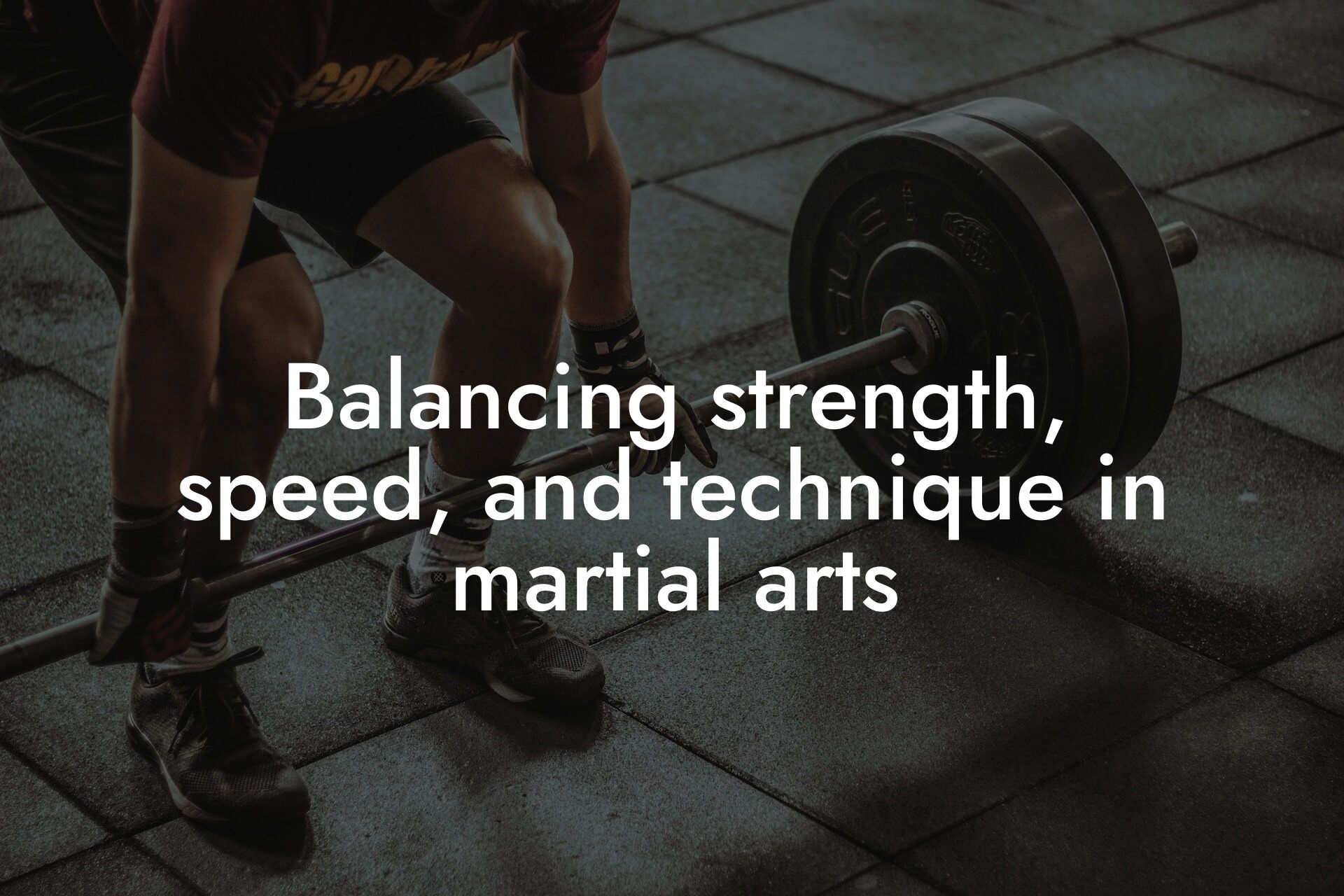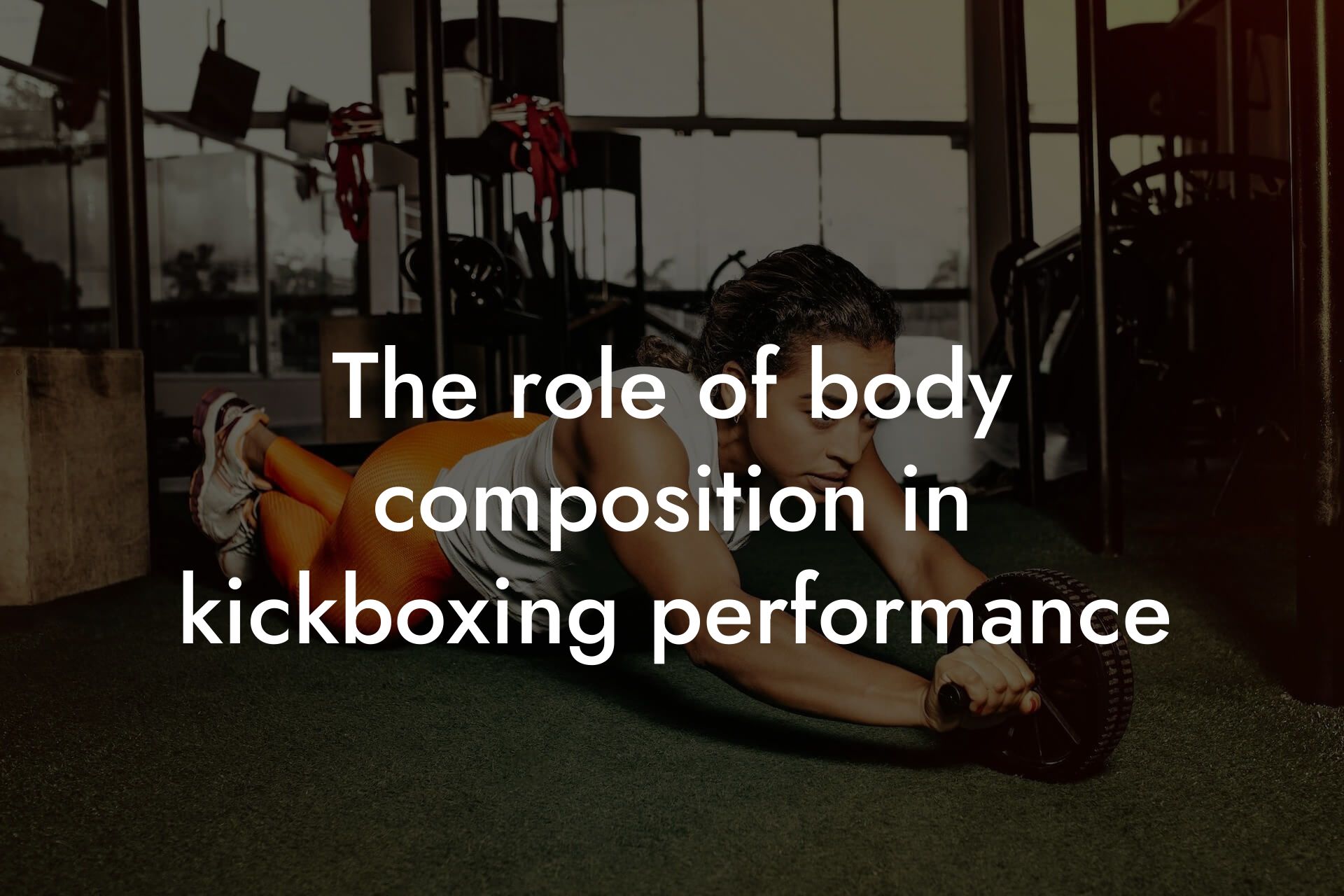As a martial artist, you understand the importance of being in top physical condition to perform at your best. One crucial aspect of achieving optimal performance is maintaining a healthy body fat percentage. Excess body fat can hinder your speed, agility, and overall martial arts skills, making it essential to focus on reducing body fat to improve your performance.
Table of Contents
- The Impact of Body Fat on Martial Arts Performance
- How to Determine Your Ideal Body Fat Percentage for Martial Arts
- Nutrition Strategies for Reducing Body Fat
- Training Strategies for Reducing Body Fat and Improving Speed and Agility
- The Importance of Progressive Overload and Periodization
- Common Mistakes to Avoid When Trying to Reduce Body Fat
- Frequently Asked Questions
The Impact of Body Fat on Martial Arts Performance
Carrying excess body fat can have a significant impact on your martial arts performance. Here are some ways in which excess body fat can hold you back:
• Reduced speed and agility: Excess body fat adds weight and resistance, making it more challenging to move quickly and efficiently.
• Decreased endurance: The extra weight and energy required to move excess body fat can lead to fatigue and decreased endurance.
• Impaired flexibility and mobility: Excess body fat can restrict your range of motion, making it more difficult to perform complex movements and techniques.
• Increased risk of injury: Excess body fat can put additional stress on your joints, increasing the risk of injury and prolonged recovery times.
How to Determine Your Ideal Body Fat Percentage for Martial Arts
Determining your ideal body fat percentage is crucial to achieving optimal performance in martial arts. A general guideline for martial artists is to aim for a body fat percentage between 10-15% for men and 15-20% for women. However, this can vary depending on your specific martial art, age, and fitness level.
At Tano Performance Group, we use advanced DEXA technology to provide a comprehensive body assessment, including body fat percentage, lean mass, and bone density. This information enables you to tailor your training and nutrition plan to achieve your ideal body composition.
Nutrition Strategies for Reducing Body Fat
A well-structured nutrition plan is essential for reducing body fat and improving martial arts performance. Here are some key nutrition strategies to focus on:
• Create a calorie deficit: Reduce your daily caloric intake to create a calorie deficit, which will encourage your body to burn stored fat for energy.
• Eat protein-rich foods: Protein takes more energy to digest, which can help increase your metabolism and support lean muscle mass.
• Incorporate healthy fats: Healthy fats, such as avocado and nuts, provide energy and support hormone function.
• Focus on whole foods: Emphasize whole, unprocessed foods, including fruits, vegetables, lean proteins, and whole grains.
Training Strategies for Reducing Body Fat and Improving Speed and Agility
In addition to a well-structured nutrition plan, a targeted training program is essential for reducing body fat and improving speed and agility. Here are some key training strategies to focus on:
• High-intensity interval training (HIIT): HIIT involves short bursts of high-intensity exercise followed by brief periods of rest. This type of training is effective for burning fat and improving cardiovascular fitness.
• Strength training: Building lean muscle mass through strength training can help increase your metabolism and support fat loss.
• Plyometric and agility training: Incorporating plyometric and agility exercises, such as jump squats and ladder drills, can help improve your speed, agility, and overall martial arts performance.
The Importance of Progressive Overload and Periodization
To continue making progress and improving your martial arts performance, it's essential to incorporate progressive overload and periodization into your training program.
Progressive overload involves gradually increasing the intensity of your workouts by adding weight, reps, or sets over time. This helps to continue challenging your muscles and promoting fat loss.
Periodization involves varying your training program to avoid plateaus and prevent overtraining. This can involve changing your exercise selection, intensity, or volume every 4-6 weeks to continue making progress.
Common Mistakes to Avoid When Trying to Reduce Body Fat
When trying to reduce body fat, it's easy to make mistakes that can hinder your progress. Here are some common mistakes to avoid:
• Crash dieting: Severely restricting your caloric intake can lead to muscle loss and a slower metabolism.
• Overtraining: Excessive training can lead to fatigue, injury, and decreased performance.
• Lack of patience: Reducing body fat and improving martial arts performance takes time and patience. Avoid expecting overnight results and focus on making sustainable lifestyle changes.
Reducing body fat is a crucial aspect of improving speed and agility in martial arts. By understanding the importance of body fat reduction, determining your ideal body fat percentage, and incorporating targeted nutrition and training strategies, you can optimize your performance and achieve your goals. Remember to avoid common mistakes, stay patient, and focus on making sustainable lifestyle changes to achieve long-term success.
At Tano Performance Group, we're committed to helping high-earning professionals like you achieve their physical goals and improve their overall well-being. With our advanced DEXA technology and expert guidance, you can take your martial arts performance to the next level and achieve the physique you desire.
Frequently Asked Questions
What is the ideal body fat percentage for martial artists?
For martial artists, an ideal body fat percentage can vary depending on the specific discipline, age, and gender. Generally, a body fat percentage between 10-15% for men and 15-20% for women is considered optimal for improved speed and agility. However, it's essential to note that individual goals and requirements may differ. Consult with a healthcare professional or registered dietitian to determine the ideal body fat percentage for your specific needs.
How does excess body fat affect martial arts performance?
Excess body fat can negatively impact martial arts performance by reducing speed, agility, and overall athleticism. Carrying excess weight can also increase the risk of injury, as joints and muscles are put under additional stress. Furthermore, excess body fat can affect cardiovascular endurance, making it more challenging to sustain high-intensity efforts during training and competition.
What are the benefits of reducing body fat for martial artists?
Reducing body fat can significantly improve martial arts performance by increasing speed, agility, and power. It can also enhance overall athleticism, boost confidence, and reduce the risk of injury. Additionally, reducing body fat can improve cardiovascular endurance, allowing martial artists to sustain high-intensity efforts for longer periods.
How can I measure my body fat percentage?
There are several ways to measure body fat percentage, including skinfold measurements, bioelectrical impedance analysis (BIA), dual-energy X-ray absorptiometry (DXA), and hydrostatic weighing. It's essential to consult with a healthcare professional or registered dietitian to determine the most accurate and suitable method for your needs.
What is the best way to reduce body fat for martial artists?
A combination of a balanced diet, regular cardiovascular exercise, and strength training is the most effective way to reduce body fat for martial artists. Focus on whole, nutrient-dense foods, including lean proteins, complex carbohydrates, and healthy fats. Aim to create a calorie deficit of 500-1000 calories per day to promote weight loss while preserving muscle mass.
How can I maintain muscle mass while reducing body fat?
To maintain muscle mass while reducing body fat, it's essential to consume adequate protein (1.6-2.2 grams per kilogram of body weight) and engage in regular strength training exercises. Focus on compound exercises such as squats, deadlifts, and bench press, and aim to complete 2-3 sets of 8-12 reps per exercise.
What are the best exercises for improving speed and agility in martial arts?
Exercises that improve speed and agility in martial arts include plyometric training (jump squats, box jumps), agility drills (cone drills, ladder drills), and resistance band training. Additionally, incorporating martial arts-specific movements, such as kicking and punching drills, can help improve speed and agility.
How can I incorporate high-intensity interval training (HIIT) into my martial arts training?
HIIT involves short bursts of high-intensity exercise followed by brief periods of rest. To incorporate HIIT into your martial arts training, try alternating between high-intensity martial arts drills (e.g., kicking and punching combos) and brief periods of rest. For example, complete 30 seconds of high-intensity drilling, followed by 30 seconds of rest. Repeat for 15-20 minutes.
What is the importance of proper nutrition for martial artists?
Proper nutrition is essential for martial artists, as it provides the necessary energy and nutrients for optimal performance. A balanced diet should include lean proteins, complex carbohydrates, and healthy fats, as well as adequate hydration. Aim to consume a post-workout meal or snack within 30-60 minutes after training to aid in recovery.
How can I stay hydrated during martial arts training?
Adequate hydration is crucial for martial artists, as it helps regulate body temperature and maintain physical performance. Aim to drink at least 8-10 glasses of water per day, and make sure to drink water before, during, and after training. Additionally, consider incorporating electrolyte-rich beverages, such as coconut water or sports drinks, to help replenish lost electrolytes.
What are the benefits of incorporating strength training into my martial arts routine?
Incorporating strength training into your martial arts routine can improve overall athleticism, increase power, and enhance speed and agility. Strength training can also help reduce the risk of injury by strengthening muscles and connective tissues.
How can I balance my martial arts training with other aspects of my life?
Balancing martial arts training with other aspects of life can be challenging, but it's essential for overall well-being. Set realistic goals and prioritize your training schedule, making sure to leave time for rest and recovery. Additionally, consider incorporating martial arts training into your daily routine, such as training during lunch breaks or early morning sessions.
What are the benefits of working with a personal trainer or coach?
Working with a personal trainer or coach can help martial artists improve their performance by providing personalized guidance, correcting technique, and creating customized training programs. A trainer or coach can also help martial artists stay motivated and accountable, ensuring they reach their goals.
How can I track my progress and stay motivated?
Tracking progress and staying motivated are crucial for martial artists. Consider keeping a training log to track workouts, weight, and body fat percentage. Set realistic goals and celebrate small victories along the way. Additionally, find a training partner or join a martial arts community to stay motivated and accountable.
What are the risks of rapid weight loss for martial artists?
Rapid weight loss can be risky for martial artists, as it can lead to muscle loss, decreased performance, and increased risk of injury. Aim for a slow and steady weight loss of 0.5-1 kg per week, and focus on sustainable lifestyle changes rather than quick fixes.
How can I maintain my martial arts training during periods of injury or illness?
Maintaining martial arts training during periods of injury or illness can be challenging, but it's essential for long-term progress. Consider modifying your training to accommodate your injury or illness, and focus on rehabilitation exercises to aid in recovery. Additionally, engage in mental training, such as visualization and meditation, to stay focused and motivated.
What are the benefits of incorporating flexibility and mobility exercises into my martial arts routine?
Incorporating flexibility and mobility exercises into your martial arts routine can improve range of motion, reduce the risk of injury, and enhance overall athleticism. Focus on exercises that target the hips, shoulders, and lower back, such as leg swings, arm circles, and hip rotations.
How can I incorporate martial arts training into my busy schedule?
Incorporating martial arts training into a busy schedule can be challenging, but it's essential for overall well-being. Consider training during lunch breaks, early morning sessions, or late evening sessions. Additionally, find a martial arts studio or gym that offers flexible scheduling options to accommodate your busy schedule.
What are the benefits of training with a martial arts community?
Training with a martial arts community can provide motivation, accountability, and support. It can also help martial artists learn new techniques, improve their skills, and gain valuable feedback from instructors and peers.
How can I stay safe during martial arts training?
Staying safe during martial arts training is crucial. Always warm up before training, and cool down afterwards. Wear proper gear, including mouthguards, gloves, and protective pads. Additionally, train with a qualified instructor who can provide guidance and supervision.
What are the benefits of incorporating mental training into my martial arts routine?
Incorporating mental training into your martial arts routine can improve focus, concentration, and overall performance. Consider incorporating visualization, meditation, and positive self-talk into your training regimen to stay focused and motivated.
How can I measure my progress and adjust my training accordingly?
Measuring progress and adjusting training accordingly is essential for martial artists. Consider tracking metrics such as body fat percentage, weight, and performance metrics (e.g., speed, agility, power). Adjust your training program based on your progress, and make sure to incorporate rest and recovery periods to avoid plateaus.
Here are some related articles you might love...
- Balancing strength, speed, and technique in martial arts
- How DEXA scans can benefit kickboxing athletes
- The role of body composition in kickboxing performance
- Strength and conditioning programs for kickboxing
- The role of kickboxing in cardiovascular health
- Nutrition tips for martial arts practitioners
- Recovery strategies for kickboxers after sparring sessions
- Bone density and its role in injury prevention in martial arts
- Maintaining muscle mass and flexibility in martial arts
Zak Faulkner
Zak Faulkner is a leading authority in the realm of physical health and body composition analysis, with over 15 years of experience helping professionals optimise their fitness and well-being. As one the experts behind Tano Performance Group, Zak has dedicated his career to providing in-depth, science-backed insights that empower clients to elevate their physical performance and overall health.
With extensive knowledge of DEXA technology, Zak specializes in delivering comprehensive body assessments that offer precise data on body fat, muscle mass, bone density, and overall physique. His expertise enables individuals to make informed decisions and achieve their fitness goals with accuracy and confidence. Zak’s approach is rooted in a deep understanding of human physiology, combined with a passion for helping clients unlock their full potential through personalised strategies.
Over the years, Zak has earned a reputation for his commitment to excellence, precision, and client-focused service. His guidance is trusted by top professionals who demand the best when it comes to their health. Whether advising on fitness programs, nutritional strategies, or long-term wellness plans, Zak Faulkner’s insights are a valuable resource for anyone serious about taking their health and fitness to the next level.
At Tano Performance Group, Zak continues to lead our Content Team revolutionising how professionals approach their physical health, offering unparalleled expertise that drives real results.




